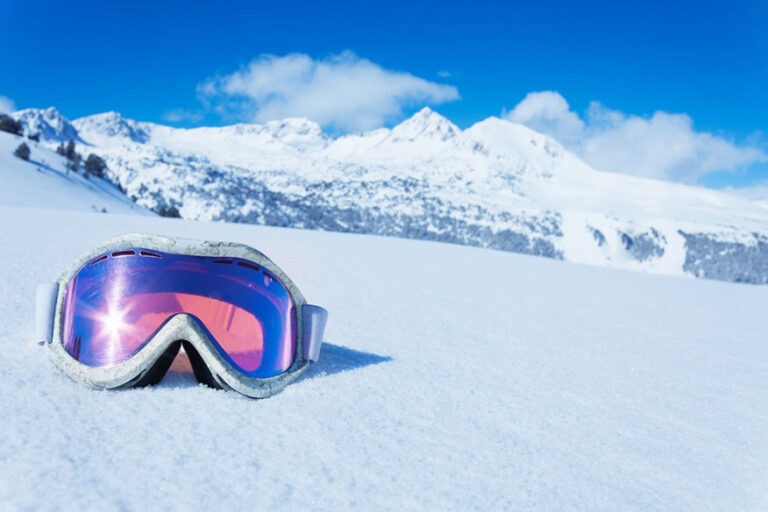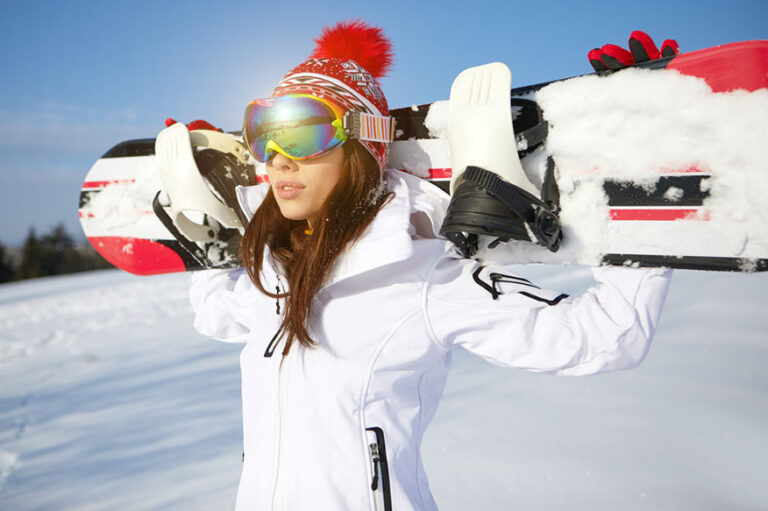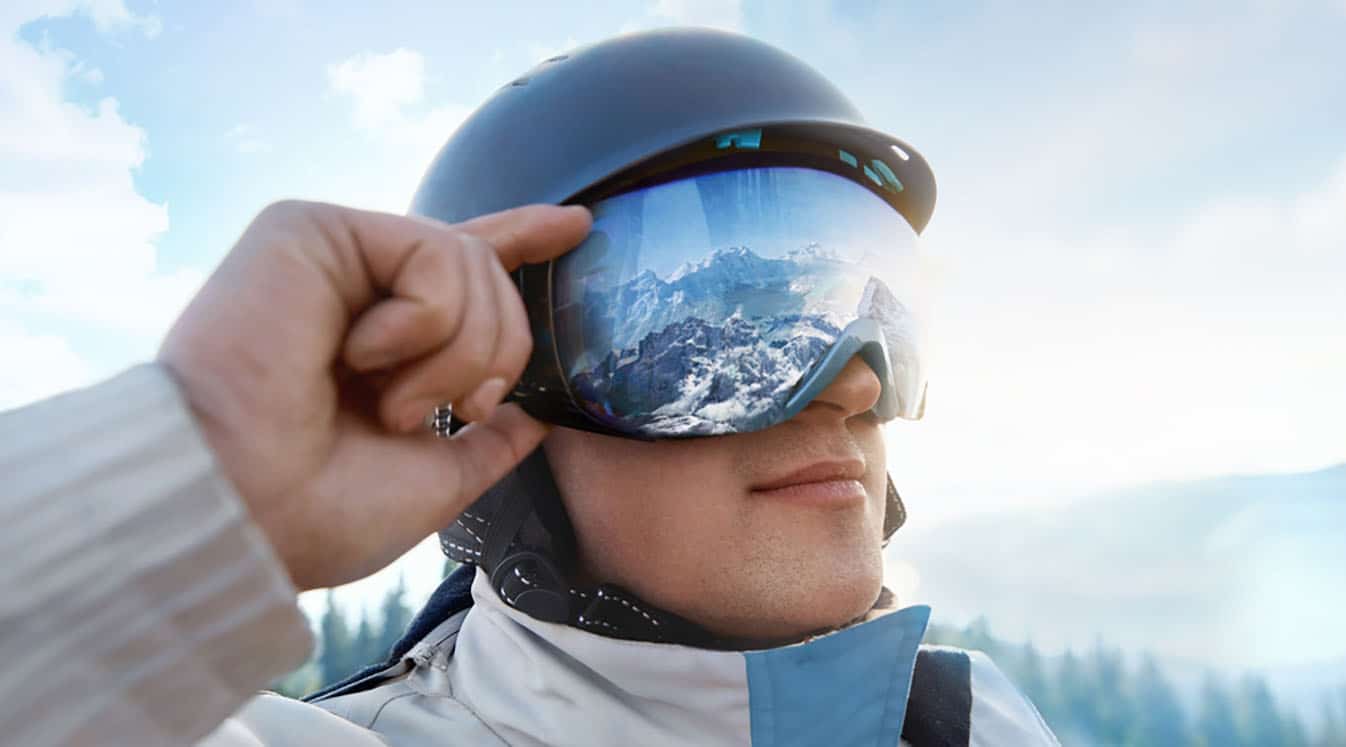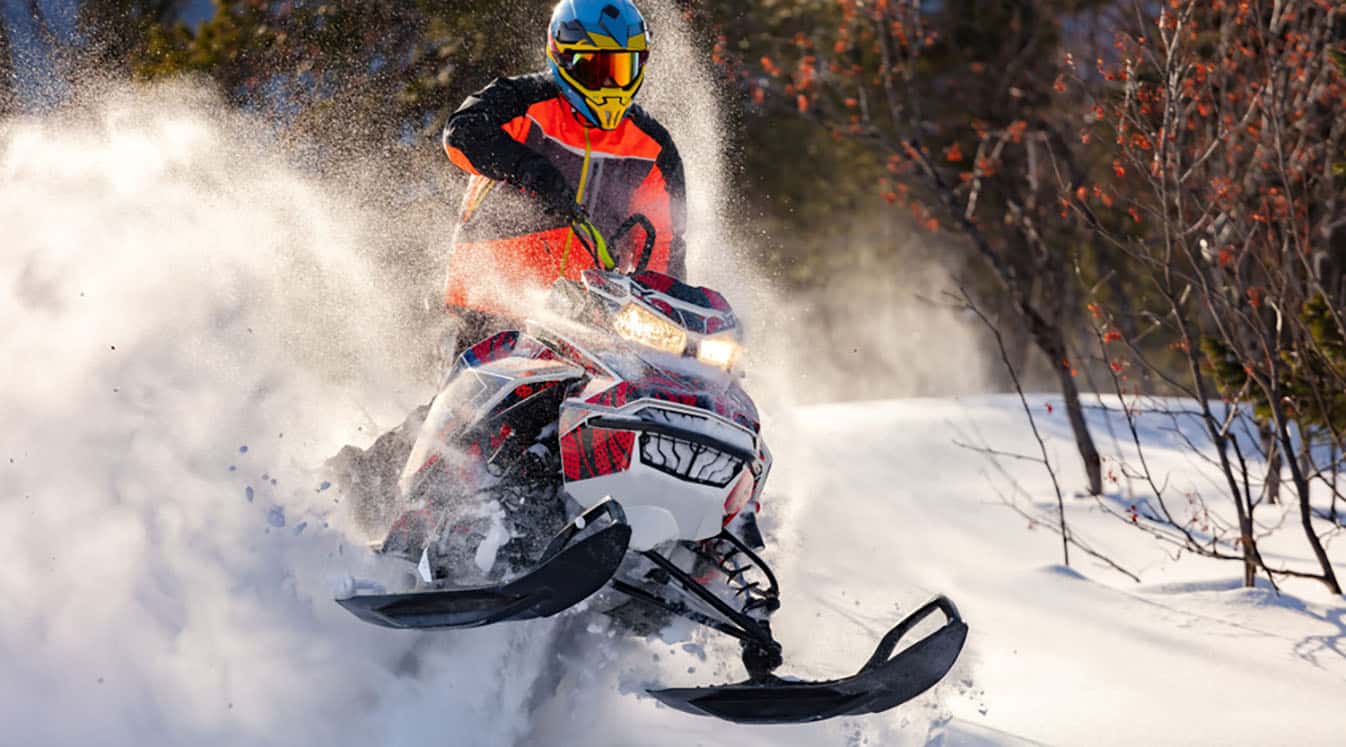Ski goggles are essential to staying safe on the trail. They help you see while shielding your eyes from various obstacles in the wild. With so many styles and brand names out there, finding the right pair can feel like searching for a needle in a haystack in a blizzard. Choosing ski goggles depends on how and where you ride – and how much you can afford.
Every pair comes with pros and cons. Consider the following factors when choosing ski goggles:
Fit and Compatibility
Ski goggles need to fit to be effective. If they’re too tight, they will compress your head like a vise grip. If they are too large, they will slide down your nose until they become a necklace. Most goggles come with an adjustable strap, but that doesn’t guarantee a perfect fit.
Try on the goggles with the rest of your ski gear before you commit to a pair. The goggles shouldn’t affect your ability to wear a helmet. Most helmets are compatible with all goggles, but you should try them on together just to be safe. If you want to talk to your companions wirelessly on the slopes, mount the Cardo Packtalk Outdoor onto your helmet to stay connected.
Your helmet and goggles won’t be enough to protect you from the cold. Learn what to wear under a ski helmet to keep your head warm and dry. Wear these items with your goggles and helmet to better understand how they will fit.
 Source: Sergey Novikov/Shutterstock.com
Source: Sergey Novikov/Shutterstock.com
If you need prescription eyewear, look for a pair that fits over your glasses or invest in an Rx pair of goggles suited for your vision if you have the money and ski regularly throughout the year. Prescription eye goggles usually cost twice the price or more if you need specialized lenses.
Lens Type
The goggle lenses will either be spherical or cylindrical. The latter wraps horizontally around your face with a flat section between your nose and forehead. The former wraps horizontally and vertically to better reflect how your eyes see the world. Spherical lenses are more expensive because they are harder to make, but they increase peripheral vision and reduce glare.
Once you’ve made that distinction, consider the lens color and the amount of light coming through the lens, aka visible light transmission (VLT). Lighter shade goggles, or those with a high VLT, are well-suited to cloudy days. Darker tints with a lower VLT reduce glare during sunny days. Clear goggles have full VLT for maximum visibility at night.
Many lenses come with unique features that increase the price. Nearly every pair has UV protection to protect your eyes from the sun. Polarized lenses further reduce glare. Photochromic lenses automatically adjust the VLT based on the time of day and weather conditions. Mirrored lenses reflect more light for up to 50 percent less glare.
If you want to use more than one type of lens, choose a pair with interchangeable lenses to quickly swap out your glass when the light changes.
Ventilation
Your goggles will fog faster than the love scene in Titanic without proper ventilation. Companies use several techniques to get around this. Most pairs use double-layer lenses to prevent sudden temperature changes. Many also come with anti-fog coatings. You can also spray on the coating if your goggles are fogging over. Vents built in along the sides reduce fog by letting out the warm air, but your face might get cold. High-end pairs use battery-powered fans to keep the air flowing.
 Source: Zoom Team/Shutterstock.com
Source: Zoom Team/Shutterstock.com
Technology
If you want your eyewear to do more than shield your face, invest in a pair powered by the latest technology. New models come with built-in digital displays that show you the time and your location via GPS. They can also connect to your phone, so you don’t have to keep checking your device every time you get a text.
Price
Goggles can cost anywhere from $25 on the low end to well over $300 on the luxury side. That’s quite a price difference. Consider how much you will use the goggles before investing in a pair. If you still don’t know what kind to use, rent different styles and take them for a test ride on the slopes.
Ski Safely and In Style
Finding the right pair of goggles will keep you safe on the trail. Remember these tips to make sure you can see clearly in every situation.
Use the Cardo Packtalk Outdoor to Connect Wirelessly on the Slopes





